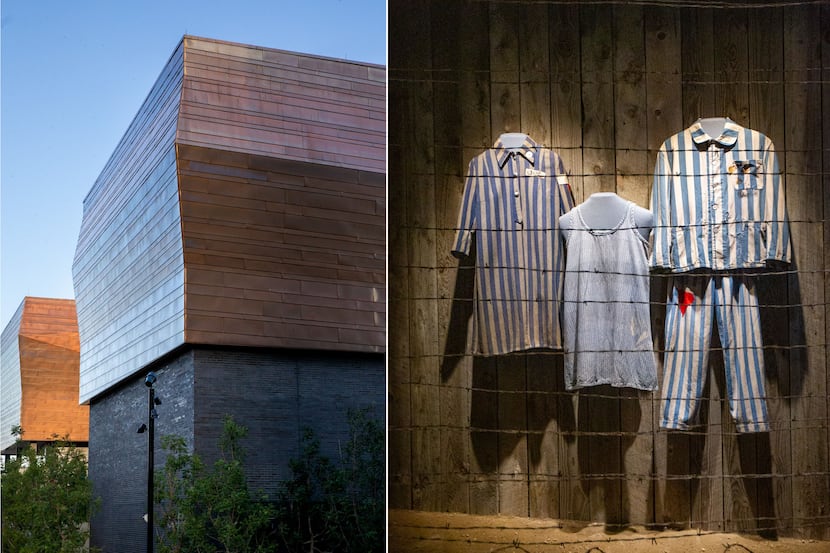When the Dallas Holocaust Museum revealed its plans for a new West End home back in 2015, the chief urgency was the loss of survivors and firsthand witnesses to the Nazi horrors.
Four years later, that $73.5 million facility opens with an expanded mission at a moment when Jews find themselves under increasing threat. According to the FBI, there has been a dramatic rise in hate crimes targeting Jews: a jump of 37% between 2016-2017 alone, a statistic that does not include the slaughter at Pittsburgh's Tree of Life synagogue last October. In 2017, white supremacists chanting "Jews will not replace us" clashed with opponents in Charlottesville, and President Donald Trump saw "very fine people on both sides."
It arrives, as well, at a moment in America -- and in Texas in particular -- when immigrant children have been separated from their parents, and a man drove from our backyard to El Paso to shoot people he perceived to be immigrants.
Amid this maelstrom, the institution reopens as the rebranded Dallas Holocaust and Human Rights Museum, expanding its purview along with its footprint.
Its new 55,000-square-foot building, designed by Dallas-based Omniplan, quintuples its previous space in a historic warehouse just a block away. The design negotiates its own tricky balance: aiming to both fit into the historic character of the West End while establishing its own iconic presence.
It manages this task with appropriate dignity, eschewing overwrought formal theatrics on the one hand (see, especially, the work of Daniel Libeskind), and kitschy historical reference on the other, two frequent missteps with Holocaust museum design.
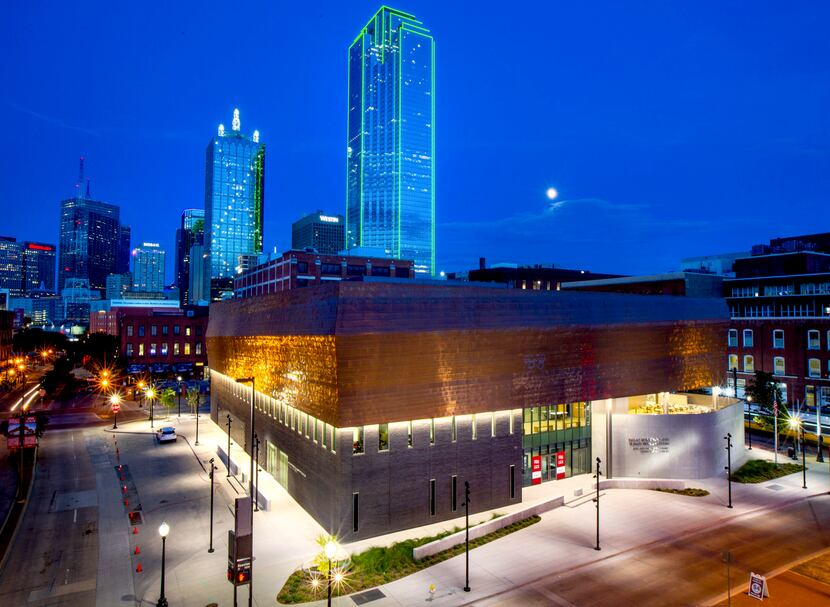
Here, the bottom two stories of the U-shaped building are clad in a restrained dark gray brick with punched vertical openings. The top third story, which holds the principal exhibition spaces, is wrapped in a band of horizontal panels of copper that shimmer in the Texas sun, its purpose both ornamental and metaphorical.
Some may see that metal as a reference to the gold extracted from Jews by the Nazi state. But to the museum and its architects it represents something more hopeful, with the gradual weathering process of the material, which will darken over time like an old penny, suggesting resilience and durability through physical trial.
The building is not quite as successful in its orientation and exhibits. Little advantage is taken of the proximity to DART's adjacent rail tracks on Pacific Avenue, and the implicit connection to the means of arrival at the Nazi death camps.
Instead, entry is through a recessed lobby along North Houston Street. The obligatory security checkpoint opens into the short end of a rather institutional atrium lobby with gray floors of polished concrete. There is an unfortunate banality to the proceedings here, with little sense of transition from the street to a place that will be a test of the mind and spirit.
This is partially ameliorated by an enclosed courtyard that sits off the main lobby, a space of respite fronted by a sharp glass curtain wall. A temporary exhibition space, classrooms for visiting students, a gift shop, and a theater also sit off the main lobby.
A journey through the exhibits begins in a darkened chamber on that ground floor. Its doors close, a short video plays, and visitors then make their way up a switchback stairwell with stations that provide "historical" background: The Jews escaped Egypt when God parted the Red Sea, only to close it on Pharaoh's army. This is biblical history, which has its place, but serious historians treat it more as myth. This may seem trivial, but a museum addressing the Holocaust, given the calumnies of those who would deny it, should be absolutely factual in its history.

The exhibits proper have the opposite problem. Produced by the team of Michael Berenbaum (historical expert) and Edward Jacobs (exhibit designer), who have made a virtual business of Holocaust exhibit design, they are overburdened with fact, with information panels, with the dutiful recitation of history. The experience is akin to walking into a three-dimensional middle-grade textbook.
Take for instance, a section on the Nazi rise to power, with information panels and videos placed beneath hanging Nazi banners and dummied-up classical columns. Those elements should convey the megalomaniacal authority of the Nazi state, but because they have been reduced in scale to fit within the small dimensions of the gallery, they lose their force. One life-size flag, swastika swimming in its blood red field, would make a far more dramatic and accurate impression.
The decidedly scholastic presentation might be justified by the fact that roughly half the 200,000 expected visitors to the museum will come in school groups. The exhibition is at its best when it turns to local Holocaust survivors who provide their recorded personal testimonies at video stations.
The conceptual problem is best illustrated by the treatment of the museum's signature artifact, a German boxcar of the type used to transport Jews to concentration and extermination camps. It is a uniquely powerful object, a German-built car that was sent to Belgium as a part of Germany's World War I reparations, and then requisitioned by the Nazi state after its invasion of the Low Countries.
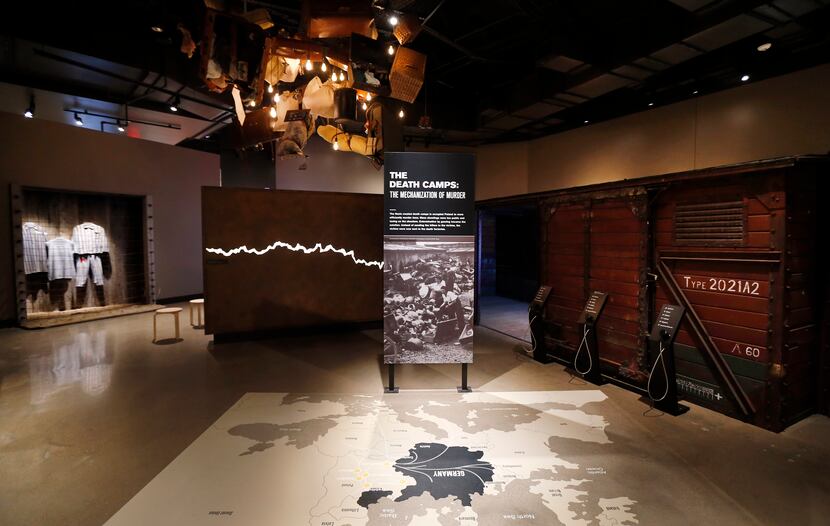
The car, which may or may not have been used to transport Jews, has been restored with great care by Ron Siebler, a craftsman whose contributions to Dallas historic preservation — from the frontier-era Sharrock-Niblo cabin to the modern work of O'Neil Ford — are without peer.
But Siebler's work is done no favors by the way it is exhibited, wedged at an angle into the flow of the exhibition, and with no special lighting that might augment its dramatic potential. Because it has no undercarriage, and because the designers chose not to elevate it on a plinth, it sits flush with the floor, its doors open on both sides, encouraging visitors to pass through. Instead of letting this space of intense power speak for itself, the designers have loaded the interior with an explanatory video.

More egregious is an adjacent display of death camp photographs. These images of exterminated bodies are chilling testaments of inhumanity, and it is logical that the museum would not want them openly exposed.
Yet the decision to place them in a freestanding display case viewable only through a narrow, jagged slash is grossly inappropriate: a kitschy aestheticization that makes the images physically hard to see and, worse still, seem practically unreal in the glowing container -- precisely the opposite of the desired effect.
The journey though the years of the Holocaust does not end with the liberation of the death camps or the Nuremberg trials, but continues on to a broader examination of genocide and the struggle for human rights. Indeed, two thirds of the museum's principal exhibition space is devoted to these themes.
That the museum addresses other genocides in such detail sets it apart from comparable institutions, most notably the United States Holocaust Memorial Museum in Washington, D.C. This past June, that institution went so far as to issue a statement, in response to the use of the term "concentration camps" to describe the internment centers in which migrants were being held at the border, declaring that it "unequivocally rejects efforts to create analogies between the Holocaust and other events, whether historical or contemporary."
The Dallas museum takes a different tack. While emphasizing the unique nature of the Holocaust, it offers it up as a paradigm. "The common denominator is what can happen when hatred and prejudice go unchecked," says Mary Pat Higgins, the museum's director. "We want to inspire critical thinking and to prompt visitors to think about their moral and ethical responsibilities when they see injustice."
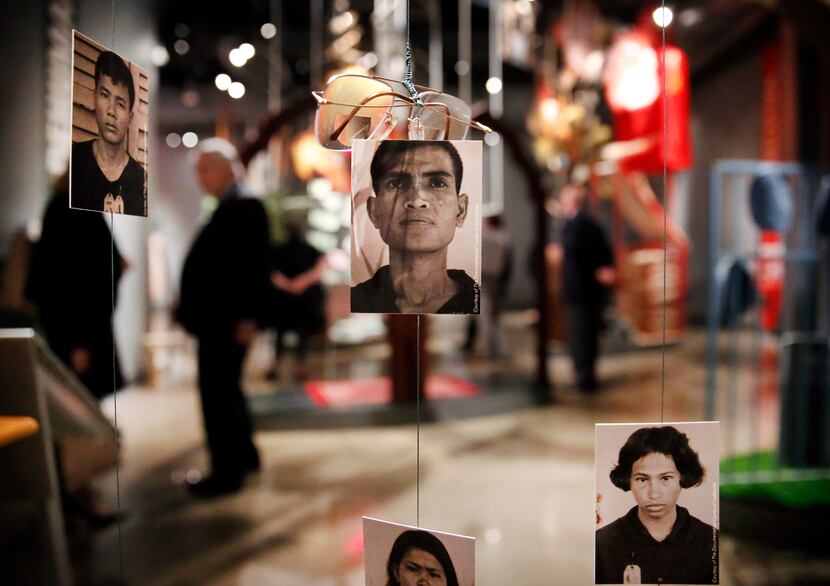
In the effort to prompt that thinking, the museum models 10 stages in the process of genocide, and illustrates each with a historical example: the Khmer Rouge and "symbolization," Rwanda and "polarization." To their credit, the curators do not shy away from potential controversy, using the Armenian genocide as an illustration of "denial," despite the Turkish government's continuing rejection of this history.
The museum is also unafraid to point in our own direction, citing the devastation of the Karankawa people in Texas as its case study of "discrimination."
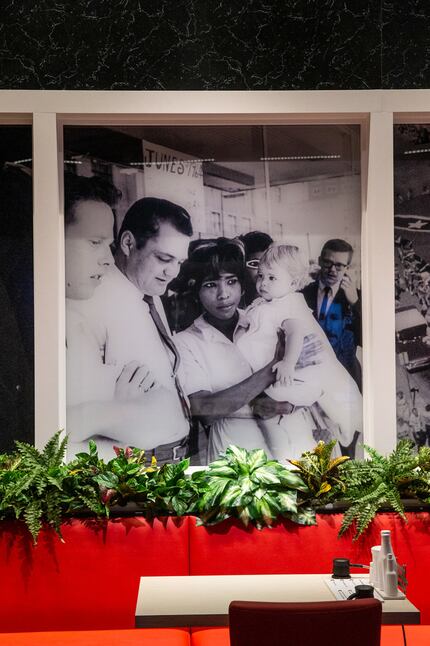
The third wing in the museum triad is devoted to civil rights in America, presented as a heroic if not quite fulfilled journey, including the current struggle for LGBTQ rights. The most successful of these exhibits is a display that reproduces the physical elements of Dallas' Piccadilly Cafeteria, which refused to desegregate in 1964 and was the subject of African-American protest.
The exhibit concludes with a digital console that prompts visitors with questions about their interests and then links them to local cultural institutions advancing the ideals of diversity within the community. It is a notably proactive response to the "never again" injunction of the Jewish community. There is also something essentially Dallas — in the best way — in drawing a message of possibility and personal responsibility from the most egregious moments in our collective history.
Passage through the third floor galleries ends in a light-filled memorial space with plaques of white Corian inscribed with names of Holocaust victims from or related to families from the Dallas area.
The museum has one additional programmed exhibit, an interactive holographic-style display in a dedicated black-box theater. "Dimensions in Testimony" is produced by the USC Shoah Foundation, the Holocaust documentary organization formed by Steven Spielberg, which is responsible for its operation.
Video images of Holocaust survivors are projected up onto a clear cylinder coated with reflective film, giving them the appearance of three-dimensionality. Visitors are prompted to ask questions, and these apparitions respond with the appropriate choice from a library of 1,200 pre-recorded options, giving the sense of a genuine conversation.
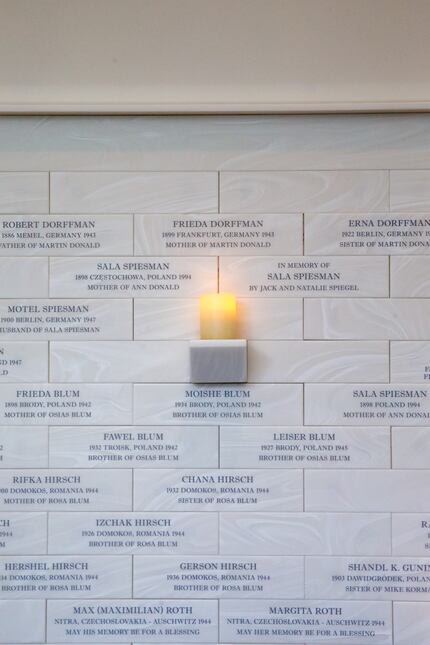
The idea, with the last generation of survivors disappearing, is to maintain a direct human connection to the experience of the Holocaust. It was not yet in operation when I visited the museum, so I cannot attest to its efficacy, but it left me apprehensive. Will visitors, and especially kids, walk away thinking about the whiz-bang technology, and not the subject matter it presents? Is it responsible to suggest that it is possible to fabricate reality at a Holocaust museum? How long will it be before the technology becomes obsolete, and will it then seem hokey?
The strength of the museum lies in its capacity to present history in a tactile, physical way. It is this hunger to viscerally confront the past that has, for the last half century, attracted visitors to the West End, which is at once the nation's most notorious site of political violence and a place of healing through historical understanding.
Whatever its flaws, the remade Holocaust and Human Rights Museum is a significant contribution to those efforts, and to the city.
And we need it more than ever.
More architecture stories by Mark Lamster
The single greatest work of 21st century American architecture will break your heart
An open letter to the mayor-elect: Here are 10 ways to make Dallas better
As hackers hold 22 Texas towns for ransom, Dallas needs a data defense
